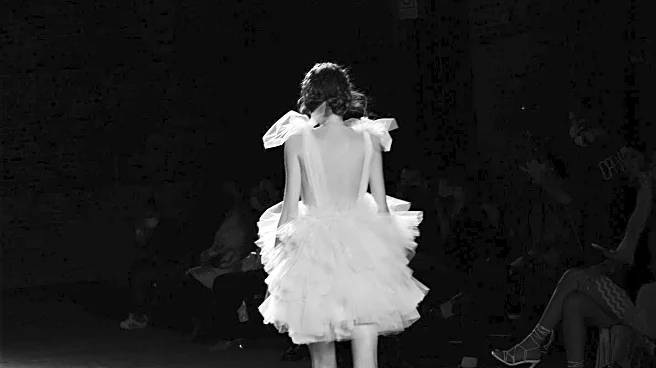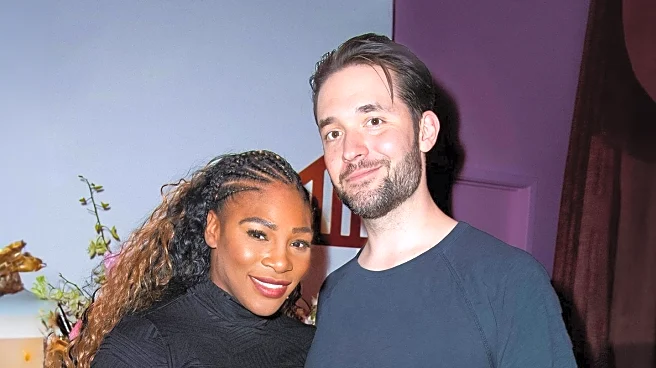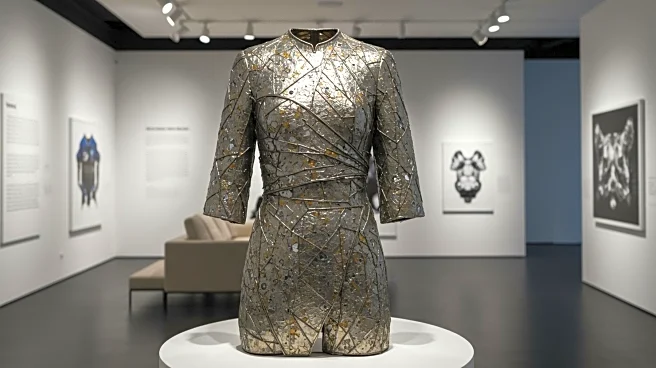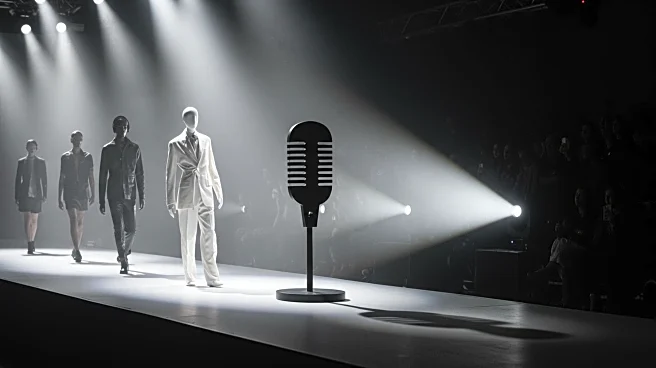What's Happening?
Vetements' Spring 2016 show, held in a Chinese restaurant in Belleville, Paris, marked a significant moment in fashion history. The event was characterized by a visceral sense of a generational shift, as the brand, led by Demna and Guram Gvasalia, along with their Russian-born friends, challenged the Paris fashion establishment. The show featured subversive street-style elements such as hoodies, XXL tailoring, and appropriated logos, which later became mainstream. The presentation was a pivotal moment that contributed to Demna's rise as the creative director at Balenciaga, influencing global youth fashion trends.
Why It's Important?
The Vetements Spring 2016 show is significant because it represented a major shift in fashion, where street-style elements became normalized and widely adopted. This transformation influenced the global fashion landscape, with Demna's designs at Balenciaga further popularizing the exaggerated slouch and attitude. The show demonstrated the power of subversive fashion to challenge traditional norms and establish new trends, impacting designers, retailers, and consumers worldwide. It highlighted the role of fashion as a cultural force capable of driving change and innovation.
What's Next?
The influence of Vetements' Spring 2016 show continues to be felt in the fashion industry, as designers and brands explore the boundaries between street style and high fashion. The normalization of these elements suggests ongoing experimentation and evolution in fashion design. As the industry adapts to changing consumer preferences, the legacy of Vetements' subversive approach may inspire future collections and collaborations, potentially leading to new fashion movements and trends.
Beyond the Headlines
The Vetements Spring 2016 show also raises questions about the commercialization of subversive fashion. As elements that were once radical become mainstream, the industry faces challenges in maintaining authenticity and innovation. This shift prompts discussions about the balance between creativity and commercial success, as well as the ethical implications of fashion's influence on cultural norms and identity.











